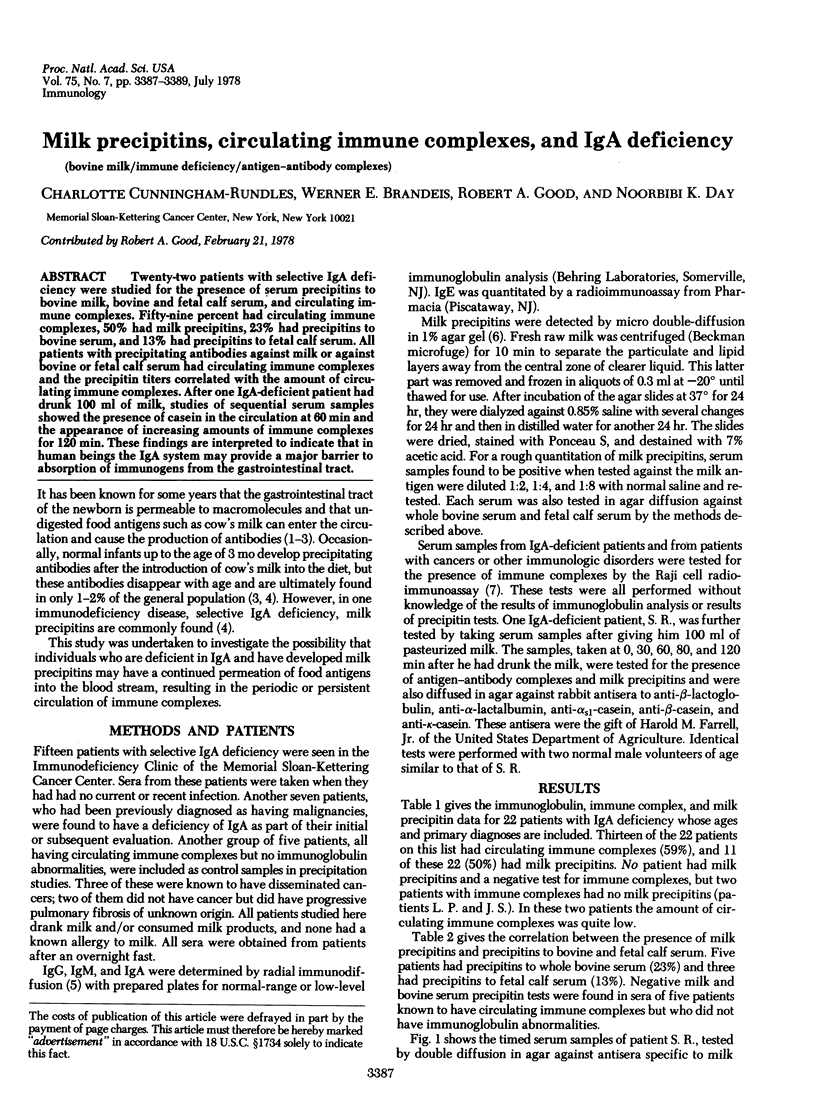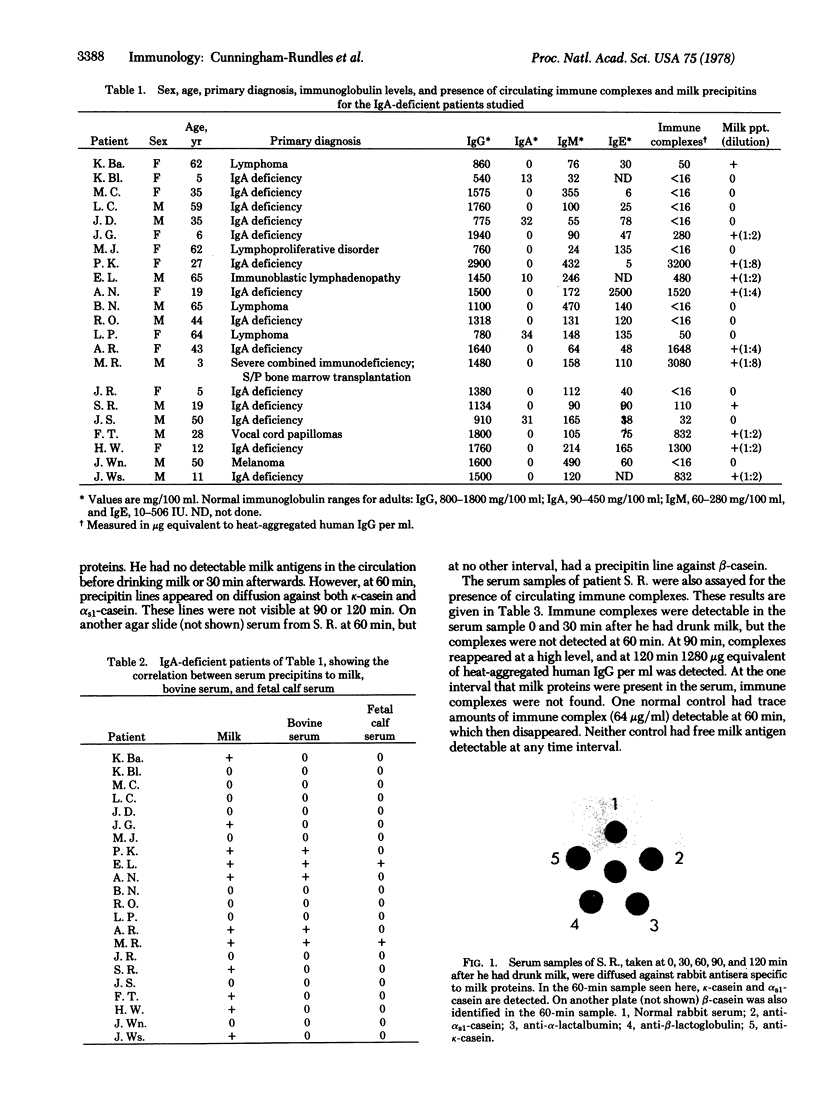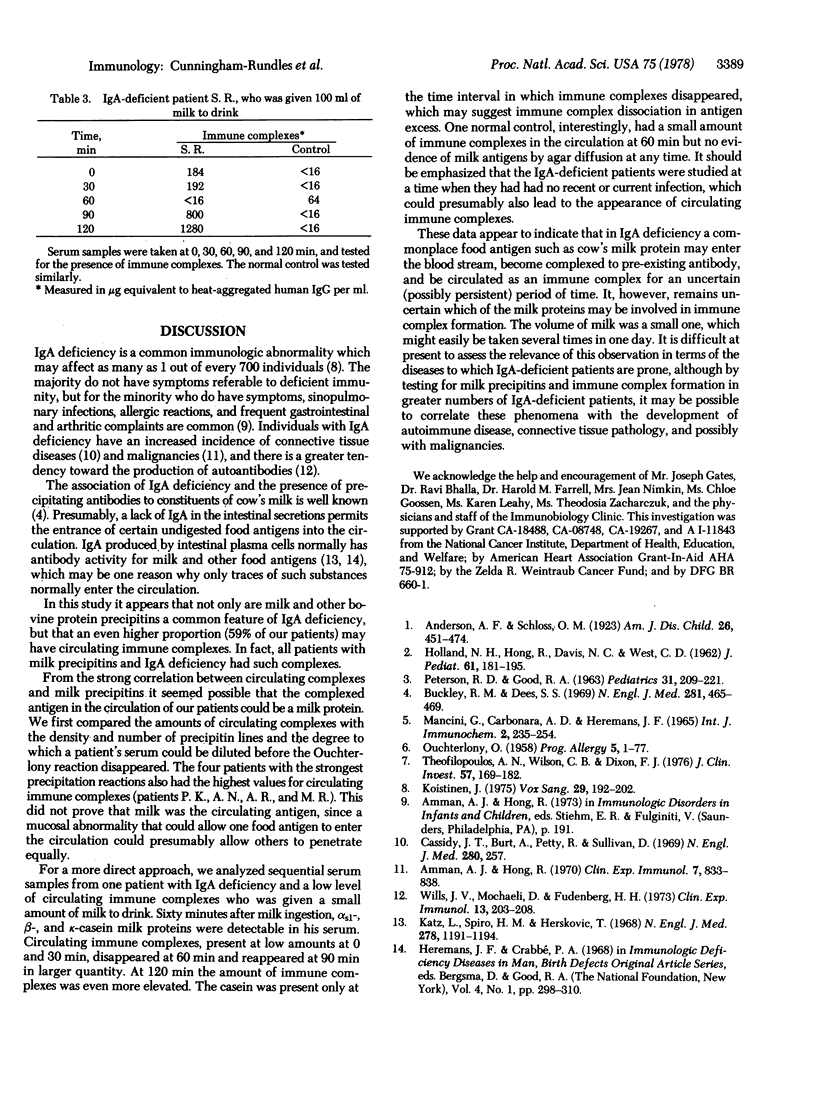Abstract
Twenty-two patients with selective IgA deficiency were studied for the presence of serum precipitins to bovine milk, bovine and fetal calf serum, and circulating immune complexes. Fifty-nine percent had circulating immune complexes, 50% had milk precipitins, 23% had precipitins to bovine serum, and 13% had precipitins to fetal calf serum. All patients with precipitating antibodies against milk or against bovine or fetal calf serum had circulating immune complexes and the precipitin titers correlated with the amount of circulating immune complexes. After one IgA-deficient patient had drunk 100 ml of milk, studies of sequential serum samples showed the presence of casein in the circulation at 60 min and the appearance of increasing amounts of immune complexes for 120 min. These findings are interpreted to indicated that in human beings the IgA system may provide a major barrier to absorption of immunogens from the gastrointestinal tract.
Full text
PDF


Images in this article
Selected References
These references are in PubMed. This may not be the complete list of references from this article.
- Ammann A. J., Hong R. Selective IgA deficiency and autoimmunity. Clin Exp Immunol. 1970 Dec;7(6):833–838. [PMC free article] [PubMed] [Google Scholar]
- Buckley R. H., Dees S. C. Correlation of milk precipitins with IgA deficiency. N Engl J Med. 1969 Aug 28;281(9):465–469. doi: 10.1056/NEJM196908282810903. [DOI] [PubMed] [Google Scholar]
- HOLLAND N. H., HONG R., DAVIS N. C., WEST C. D. Significance of precipitating antibodies to milk proteins in the serum of infants and children. J Pediatr. 1962 Aug;61:181–195. doi: 10.1016/s0022-3476(62)80252-2. [DOI] [PubMed] [Google Scholar]
- Katz J., Spiro H. M., Herskovic T. Milk-precipitating substance in the stool in gastrointestinal milk sensitivity. N Engl J Med. 1968 May 30;278(22):1191–1194. doi: 10.1056/NEJM196805302782202. [DOI] [PubMed] [Google Scholar]
- Koistinen J. Selective IgA deficiency in blood donors. Vox Sang. 1975;29(3):192–202. doi: 10.1111/j.1423-0410.1975.tb00494.x. [DOI] [PubMed] [Google Scholar]
- Mancini G., Carbonara A. O., Heremans J. F. Immunochemical quantitation of antigens by single radial immunodiffusion. Immunochemistry. 1965 Sep;2(3):235–254. doi: 10.1016/0019-2791(65)90004-2. [DOI] [PubMed] [Google Scholar]
- OUCHTERLONY O. Diffusion-in-gel methods for immunological analysis. Prog Allergy. 1958;5:1–78. [PubMed] [Google Scholar]
- PETERSON R. D., GOOD R. A. Antibodies to cow's milk proteins. Their presence and significance. Pediatrics. 1963 Feb;31:209–221. [PubMed] [Google Scholar]
- Theofilopoulos A. N., Wilson C. B., Dixon F. J. The Raji cell radioimmune assay for detecting immune complexes in human sera. J Clin Invest. 1976 Jan;57(1):169–182. doi: 10.1172/JCI108257. [DOI] [PMC free article] [PubMed] [Google Scholar]
- Wells J. V., Michaeli D., Fudenberg H. H. Antibodies to human collagen in subjects with selective IgA deficiency. Clin Exp Immunol. 1973 Feb;13(2):203–208. [PMC free article] [PubMed] [Google Scholar]



